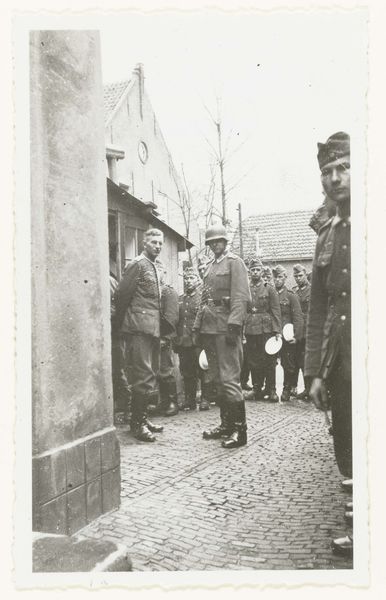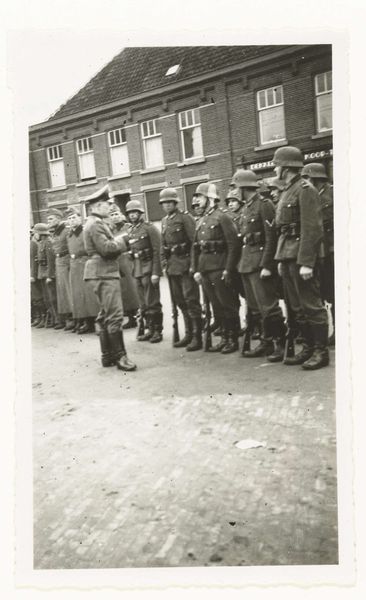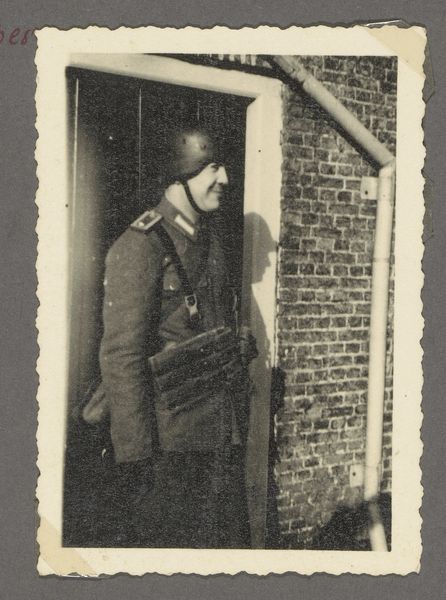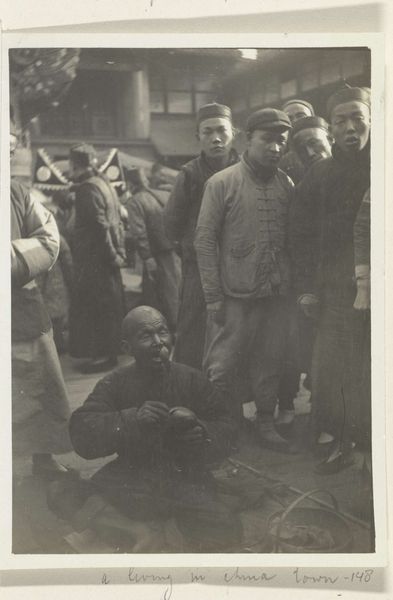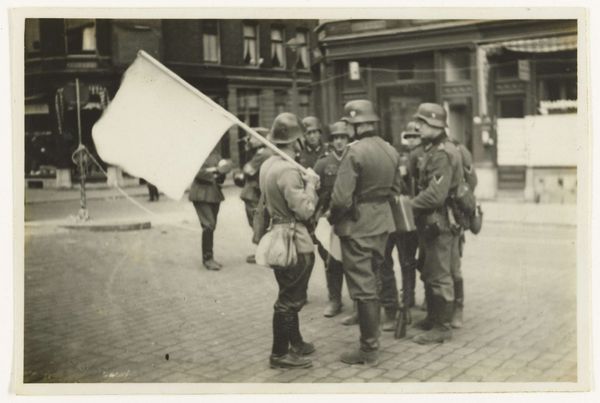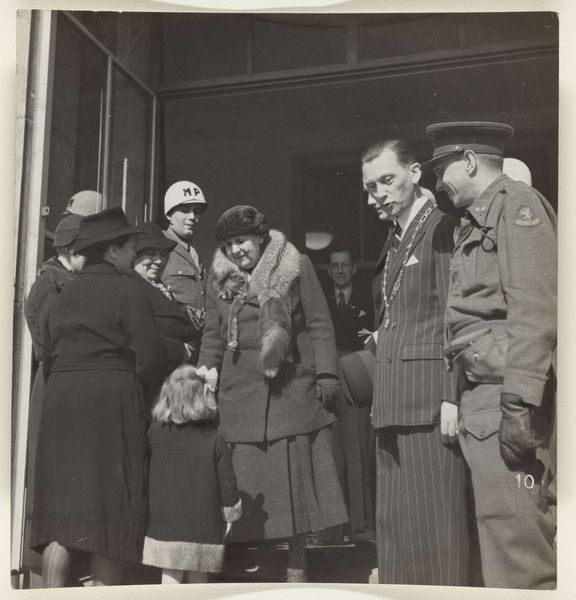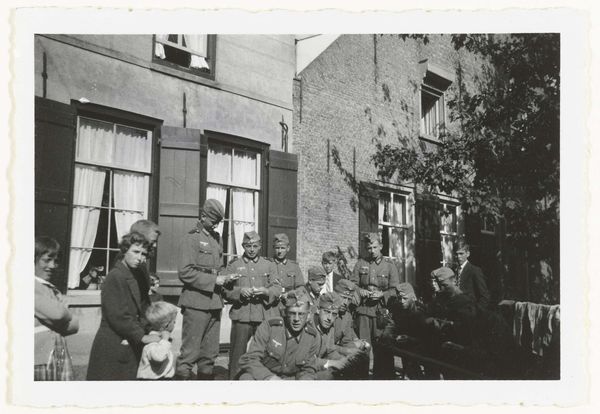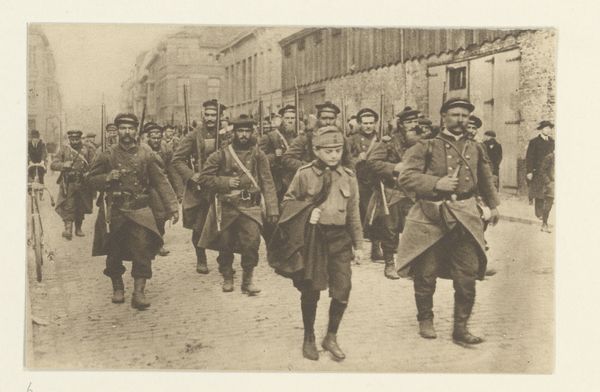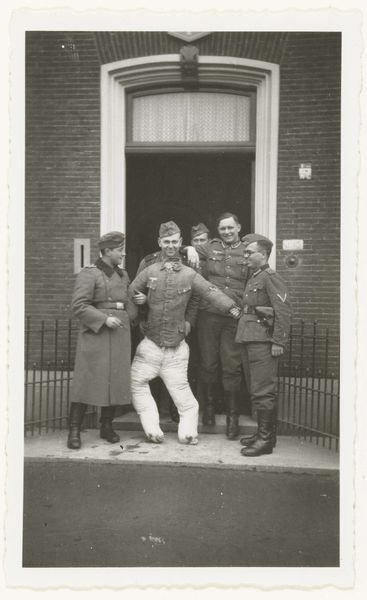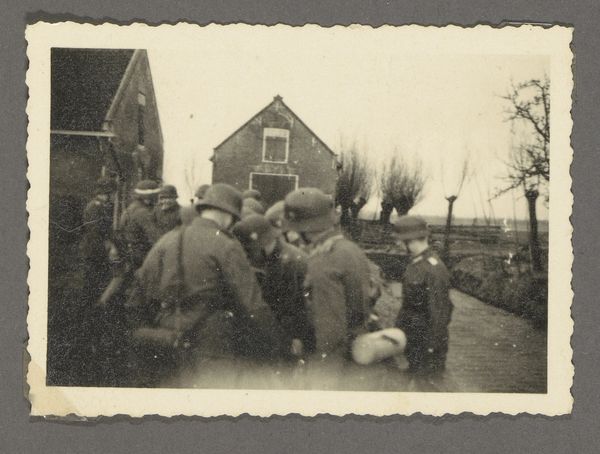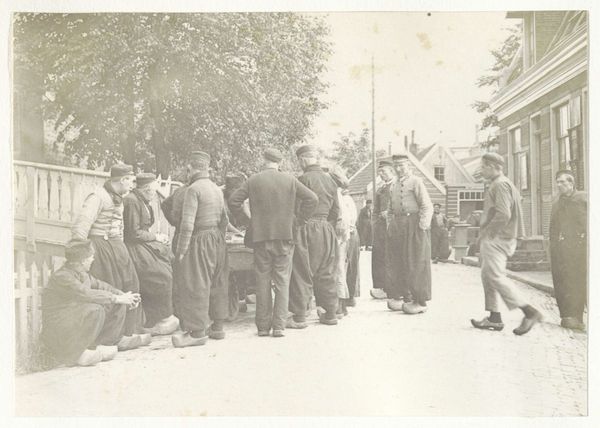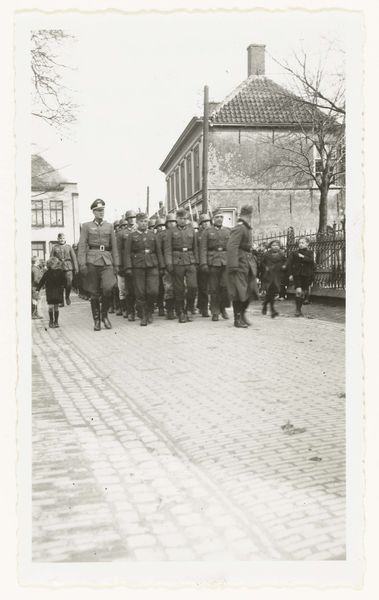
print, photography, gelatin-silver-print
#
portrait
#
print photography
#
black and white photography
# print
#
photography
#
gelatin-silver-print
#
monochrome photography
#
history-painting
#
monochrome
Dimensions: height 5.5 cm, width 8.5 cm
Copyright: Rijks Museum: Open Domain
Curator: Immediately striking is the tonal range here, almost like a scene from a film noir, all shadows and harsh light. Editor: That's quite perceptive. We are looking at "Nederlandse krijgsgevangenen," a gelatin-silver print from circa 1940 to 1945, the work of an anonymous artist here at the Rijksmuseum. Curator: The composition draws your eye. The lone soldier in the foreground versus the clustered figures in the background. Is he guarding them? Or are they already prisoners inside? There's an unsettling ambiguity. Editor: Precisely. Consider the power dynamics visually presented. The forward soldier's placement suggests control, even dominance, whilst the blurred figures behind, likely Dutch prisoners of war, lack individual clarity, becoming a mass. It is, of course, a loaded symbol when read through the lens of wartime occupation. Curator: The open doorway also pulls you in, but what's inside remains hidden. A visual metaphor, perhaps? The unknown fate of those captured, or the wider uncertainty of the war period looming large. Editor: Yes, doorways are recurrent motifs, transition zones between safety and threat. This photograph offers not just a record but also subtly stages emotional tensions endemic during war through the symbols embedded in the image's architecture and arrangement of figures. Its starkness almost amplifies the viewer's sense of vulnerability. Curator: Even now, after so much time has passed, you can still feel it; a residue from events long over yet retained by these photographic symbols that transmit from person to person across generations. Editor: Absolutely. As a historical document it's fascinating, yet as a work of art it compels us to empathize, to remember shared vulnerabilities under systemic threat, and I feel those resonances today as keenly as any art historical analysis allows.
Comments
No comments
Be the first to comment and join the conversation on the ultimate creative platform.
